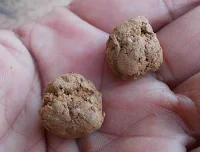Let us now go through different types of roof tiles based on the materials used in their manufacturing process.
1. Terracotta roof tile:
2. Concrete roof tile:
Concrete roof tiles are available in varied colors with thicknesses ranging from 5mm to 10mm. They are durable and can sustain uneven weather conditions.
3. Solar roof tile:
Roof tile acts as a solar panel to recharge the built-in power wall batteries in the daytime. They are renewable energy blocks having different dimensional features.
4. Ceramic roof tile:
These are the most popular roof tiles used from older times. They are clay roof tiles fired at a higher temperature for vitrification. They maintain a cool inner temperature as they are made of natural clay materials in the summer season.
5. Polycarbonate roof tile:
They are thermoplastic polymers containing carbonate groups in their composition. Polycarbonate roof tiles are strong and tough when compared to plastic roof tiles. They can be manufactured as transparent, semi-transparent, and opaque, by adding suitable chemicals & colors while molding them.
6. Metal roof tile:
These are actually seamless roof tiles in metal sheets, coated in different colors. They have a shiny surface & are available in different dimensions.
7. Plastic roof tile:
Recycled plastic is mostly used to make such types of tiles. They are lighter in weight and are available in different colored patterns.
8. FRP roof tile:
Nowadays, reinforced plastic is making its position in all types of building materials due to its added advantages. They can be molded in any design and pattern and injected with needed color dyes within them.
9. Composite roof tile:
Composite roof tiles are made of two or more types of materials sandwiched by coating binders to each material layer and applying pressure to them. Different types of plant fibers or synthetic fibers act as reinforcement materials in them.
10. Rubber roof tile:
11. Handmade Clay roof tile:
These types of roof tiles are made in hand molds by using fire clay as the raw material. They are not shiny and durable when compared to vitrified ceramic ( clay) roof tiles.
12. Acrylic roof tile:
They are made of acrylic resins added with suitable fillers and colors. Transparent roof tile made of acrylic material is good for positioning in the roofing areas, where you need sunlight to brighten your room.
If you are living in a roof house, you can use these acrylic roof tiles for sunlight instead of the square glass pieces, to create a waterproof room with a better look.
13. Stone roof tile:
The slate stone is used to cover the rooftop, which is cut into standard thickness and size.
To go through the articles related to the different types (classifications) of construction materials, click here.





























































